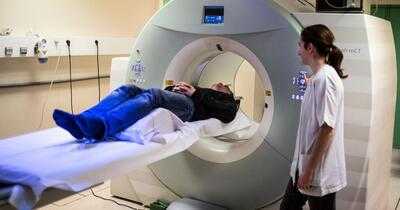The government has confirmed major changes to , more specifically, the health element - but what is it? and how much do you get?
Last week, Labour's Work and Secretary Liz Kendall announced major shake-up plans for the , with huge changes proposed for both PIP and . The shake-up is part of the government's plans to push more disabled people into work and cut its welfare spending.
Overall, the government currently spends £65billion a year on health and disability-related benefits and this is projected to increase to £100billion by 2029. The proposed changes for Universal Credit focus mainly on the elements of disability and health.
However, this word was not widely used until the recent announcements, and many may not know what this part of Universal Credit is. Here, we explain exactly what the health element is for Universal Credit and how it will change under the proposed plans.
READ MORE:
READ MORE:
What is Universal Credit?You can claim Universal Credit from the Department for Work and Pensions () if you are unemployed or you are working but on a low income. There is no set level for how much money you get every month, but there is a "standard allowance" or base rate which is dependent on your age and whether you have a partner.
These rates are rising from April 2025, and below is the current rate - alongside what it will rise to next from next month:
- Single under 25: £311.68 a month to £316.98 a month
- Single 25 or over: £393.45 a month to £400.14 a month
- Joint claimants both under 25: £489.23 a month to £497.55 a month
- Joint claimants, one or both 25 or over: £617.60 a month to £628.10 a month
If eligible, you can get extra payments on top of this to support other costs, and you can get these if you have children, a disability, are a carer, etc. These are all applied to give your total figure before any deductions are made based on whether you work, have savings, or take other measures.
How do you get the 'health element' for Universal Credit?The Universal Credit health element was a Conservative government proposal first put forward in the Health and Disability White Paper published in March 2023. These plans proposed replacing the current Universal Credit disability payments, which are called the limited capability for work-related activity (LCWRA) element and the Limited Capability for Work payment.
To get this, claimants who have health conditions or disabilities must undergo a Work Capability Assessment (WCA) to determine whether they're capable of working and eligible for the extra payments - these are the current rates and how much they will be rising to in April:
- Limited capability for work: £156.11 a month to £158.76 a month
- Limited capability for work or work-related activity: £416.19 a month to £423.27 a month (£95.78 per week to £97. per week)
Under the former Tory government proposals, the Universal Credit Health Element was set to replace the LCWRA payments from April 2026. Labour has taken on this change, and going forward, the extra payments will be rebranded as the Universal Credit Health element. They are exactly the same, and the amount you get remains the same - it will just be called the health element instead.
How is the Universal Credit health element changing?The Government announced in its Autumn Statement that it was going to make changes to the Work Capability Assessment, and last week, Kendall announced that it would be scrapped altogether in 2028. Instead, it will use the PIP assessment for those claiming the health element for Universal Credit.
This means eligibility for this will be based on the impact of disability on daily living, not on the capacity to work. However, this now links with the disability living component of PIP, and if someone loses that, they could also lose the health element in Universal Credit.
Alongside this, the government is set to freeze the health element for existing claimants for three years – between 2026 and 2029/30. This means the payment will not increase with inflation - like other DWP benefits - during that period. This means all Universal Claimants getting the health element will be worse off in real terms, taking into account inflation.
To help those impacted by this, the government says it will bring in a “permanent, above-inflation rise” to the Standard Allowance of Universal Credit, hiking it by £775 by 2029-30.
The health element will also be cut from £97 per week to £50 for people who qualify for the element after April 2026. This week, the Chancellor announced in her Spring Statement that this rate will also be frozen until 2029-30. The government says this group "will benefit" from the higher standard allowance, which will "partially offset" this reduction.
The government is also looking to Introduce a new disability payment in Universal Credit to compensate those who qualify for the new lower rate of the health element. However, this will only apply if they have “the most severe, life-long health problems who have no prospect of improvement and will never be able to work”.
Kendall also said the government would consult on stopping people getting the health top-up for Universal Credit until they are 22. She said the savings would be “reinvested into work, support and training opportunities so every young person is earning or learning and on a pathway to success”.
Kendall also confirmed that people on Universal Credit who have the most severe health conditions and disabilities will also never have to be reassessed. Although it would be beefing up reassessments for Universal Credit and PIP, as the focus wil shift back to face-to-face assessments, as opposed to video or phone assessments.
READ MORE:









